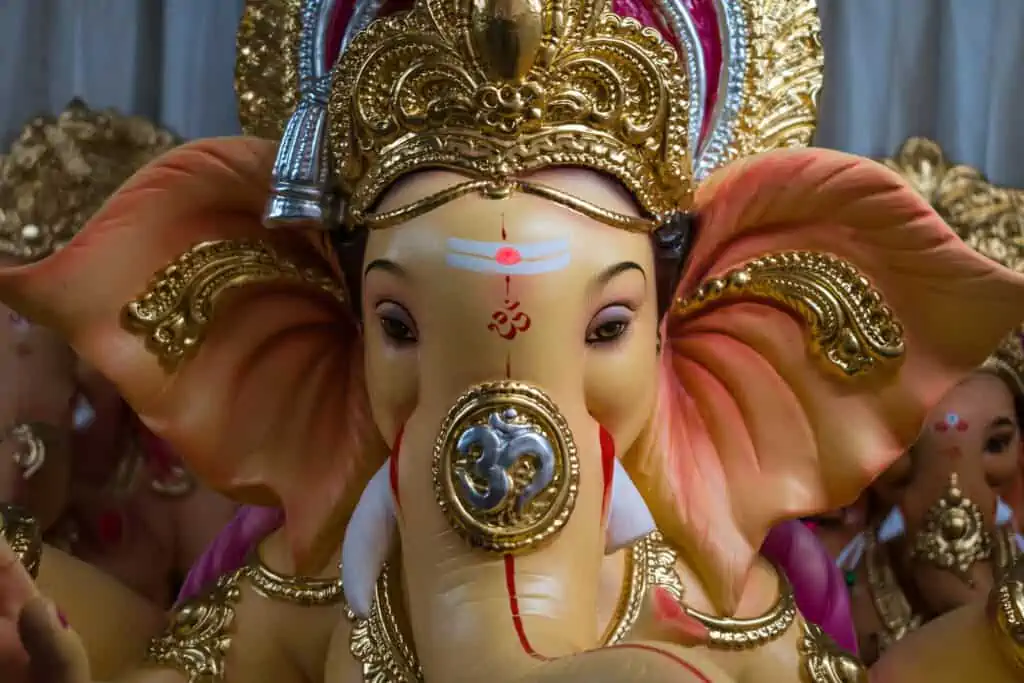The five Yamas are an integral part of yogic philosophy, forming the first of the eight limbs of yoga. The Yamas serve as moral codes and guidelines for treating others and yourself. In particular, the second Yama, Satya, translates to truthfulness. This teaching reveals how we may lie to others and ourselves, consciously or unconsciously, and the harm this can do.
Although the Yamas stem from ancient teachings, the depth of the wisdom they carry is timeless. Therefore, modern-day yoga practitioners should seek to practice Satya, along with the other four Yamas. Read on to learn how practicing Satya in your own practice can help you manage stress, raise your life force energy and live a more authentic life.
Contents
Satya In The Yoga Sutras

Satya appears in the ancient text, The Yoga Sutras of Patanjali, which is thought to be at least 4,000 years old. This text comprises 195 Sanskrit sutras, some of which detail the eight-limbed path.
The first limb of Patanjali’s Ashtanga yoga path, known as the Yamas, describes how a yoga practitioner can live an ethical life. The sutras then go on to explain how by following the Yamas, they will advance down their spiritual path.
Satya is the second Yama, coming after the first Yama Ahimsa. Satya is a Sanskrit word that means truthfulness or non-falsehood. While the most basic understanding of this teaching is to refrain from lying to others, it goes much deeper.
Another translation of the word Satya is true essence or true nature. Therefore, practicing truthfulness means thinking, speaking, and acting with integrity, staying true to who you are. It also helps us to understand that no belief is absolute and that to advance spiritually, we must be able to see things from other perspectives.
So one part of Satya is about being completely honest and refraining from lying. However, it also involves being authentic and “speaking your truth” yet knowing that no belief is unchangeable.
Satya is just one of the five ethical restraints that make up the Yamas. The other four are:
- Ahimsa (non-harming or non-violence)
- Asteya (non-stealing)
- Brahmacharya (celibacy or’ correct use of energy)
- Aparigraha (non-possessiveness or non-greed)
How To Practice Satya In Daily Life

With a lesson as deep as this Yama, you’ll find many ways to practice Satya and bring more truth into your everyday life.
Understand that truth is not absolute and unchangeable
We all have conditioned beliefs that come from our past experiences and what we were taught by our parents. So what we believe to be the highest truth will likely be different for someone else.
We often struggle to see this; instead, we become blind to others’ views and perspectives. If someone says something we do not believe, we automatically assume it cannot be correct.
The practice of Satya helps us see things differently. Our thoughts, emotions, and moods change frequently, yet, these are the things that form our beliefs and our “truth.” Therefore, our reality is just one perspective; thus, it cannot be absolute.
When we connect to the present moment, we get out of our heads and into our bodies, slowing the chatter in our minds and opening up space to see other perspectives. Therefore, practicing yoga and meditation can help us better understand truthfulness and become more open to different beliefs.
Be authentic
Do you ever hold back from saying what you think due to fear of judgment? Or do you tend to tell people what you think they want to hear to keep the peace or make people like you? If so, it turns out that you are not practicing truthfulness as by not speaking your truth, you are not being honest with yourself or the other person.
This usually stems from a lack of self-worth and is related to the throat chakra, Visshudda. If this is the case for you, it may be a good idea to do some self-reflection. Journal on what your true purpose is and what living authentically looks like to you. Then compare what you wrote down to the way you are currently living.
Self-reflection can help you discover what prevents you from being your most authentic self. From here, you can make changes to ensure your words and actions align with your highest self. Once you do this, you will experience more inner peace and freedom.
Know when to speak up and when to remain silent
Although practicing Satya means being honest about your thoughts and feelings, what if you know what you have to say may hurt someone’s feelings? Satya truthfulness does not necessarily mean you should always say what is on your mind. It is rather about knowing when you should and shouldn’t speak out.
In some cases, such as if you think your partner’s new outfit doesn’t suit them, it may be better to remain silent. In this situation, there is no need to cause unnecessary harm to their feelings. What’s more, that is just your opinion; thus, it is a judgment rather than the truth.
In other situations, refraining from telling the truth can be harmful. For example, if you have made a mistake or done something wrong in your relationship, your partner has a right to know. In this case, it is not an opinion or judgment you are voicing like in the example above; thus, they deserve to know the truth of the situation. Hiding things and not being honest is a sure way to create an unhappy and unhealthy relationship.
Understandably, telling someone the truth when you know it will hurt them can be difficult. It can also create confusion, as the first Yama, Ahimsa is about non-violence and non-harming through actions, thoughts, and words. This conundrum can make you feel like you have to pick between the two Yamas.
There is no clear right and wrong in a situation like this. Ahimsa requires awareness, so it’s up to you to explore the problem and decide which action will cause the least harm. Also, remember that Ahimsa means non-violence to yourself too. So refraining from telling the truth may save hurting someone else, but in turn, it could cause harm to yourself.
Practicing Satya In Yoga Practice

While there are plenty of ways to practice truthfulness in your daily life, you can also follow this Yama during yoga and meditation.
Get clear on your intention
We all practice yoga for different reasons. For some people, it’s to destress from a busy day; for others, it’s to become more flexible; and for others, it’s to get stronger. There is no right or wrong reason for practicing yoga. Even though it is a spiritual practice, if your intention of yoga is to build a more muscular body, that is fine.
Being honest about why you practice yoga will allow you to get more from the practice and choose the style and teacher most suited to you. So spend some time reflecting on what you want from your practice and how you can tailor it to better meet that intention.
Be honest with how your body feels
The condition of our body and mind is constantly changing; one day, we may feel energetic and flexible, while another day, we may feel stiff and tired. If you’ve ever heard a yoga teacher say, “listen to your body,” this is why.
When we don’t listen to our bodies and push through a vigorous practice when sick, in pain, or tired, we will likely feel worse rather than better. However, if we learn to be truthful about how our body feels each moment, we can tailor our daily practice to meet our ever-changing needs.
As well as noticing physical tension and other bodily sensations that signal pain, we can tap into the truths our body is telling us through our breath. For example, if you attempt a posture and notice your breath becomes rapid, this is a clear sign that you are pushing yourself too far. So, if you approach your practice with honesty and a mindful attitude, your yoga practice will become much more nourishing.
Work on the throat chakra
As the throat chakra (Vishuddha in Sanskrit) is about speaking your truth, working on balancing this energy center will help you practice truthfulness. There are specific yoga postures that stimulate energy in the throat chakra and release energetic blockages. These are asanas that open or compress the throat area, such as:
In addition to yoga postures, meditation can also help open the throat chakra. Throat chakra meditation involves visualizing blue energy in the center of the throat and chanting the mantra ‘Ham”.
Final Thoughts

The Satya Yama helps us treat others more respectfully by being truthful and honest. Honesty requires courage, so when we do this, we live a more authentic life, too. By studying and practicing the second Yama along with the rest of the eight-limbed path, we can advance further along the spiritual path towards enlightenment.



This is so much information and it assist me with teach a theme in my class also seeking my own truth.
Thank you!